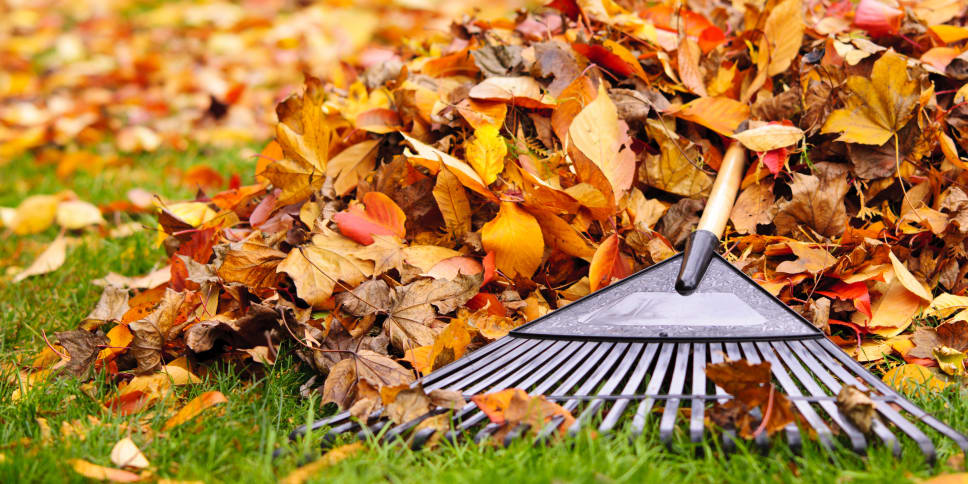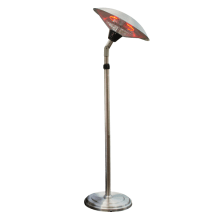How to Protect Your Lawn During Fall & Winter
8 essential tips to get your lawn ready for the fall and winter months

Fall and winter are the make-it or break-it seasons for your grass. Gardeners and homeowners should be thinking about next spring as they prep their lawns for the upcoming cold months. Yard work is no walk in the park; it can actually be quite the chore.
To help you prepare your grass from the coming frost, we’ve put together the following list of fall lawn care tips that every homeowner should know. By taking the proper precautions today, you can help give your grass the best chance at surviving the colder months, so that it’s lush come spring.
1. Aerate at Least Once Per Year
It is important to make sure your lawn gets a breather in autumn and winter. Aeration tools are used to break up compacted turf and pull-up plugs of soil and grass. There are a few different types of aerating tools that you can use. A hand-aerating tool is shaped like a pitchfork with hollow tines. There are also gas-powered machines available. They are roughly the size of a mower and are great for large yards.
Manually aerating your lawn can be a bit labor-intensive, but the process of creating small holes in the soil will allow much-needed oxygen, nutrients and water to reach the roots. This not only helps the roots establish deeper into the soil but prevents compaction and gives your lawn the best shot at surviving winter.
The aerating process can provide room in your grass for seeds to sprout, and new grass to grow and spread, without competing with pesky weeds or compacted soil. If you have kids that like to play in your yard or have an otherwise high-traffic lawn, it is recommended to aerate twice per year: once in the autumn and once in the spring. If your yard is just there for its curb appeal, then you can aerate once per year. However, if you know the type of grass that is in your yard, then you’ll be able to figure out how often it should be aerated.
2. Seed Your Lawn in Fall
Depending on the location of your home, Autumn is typically the season when the soil temperature reaches 55℉. Since turf roots grow extensively in the fall and winter, this is the prime time for seeding your lawn. While it may be tempting to go for the inexpensive seed, it can hurt you in the long run.
Cheap seed often contains weed seed, annual rye grass seed and hollow husks, which will typically drop dead after the first frost. If you want a lush lawn come spring, it is best to spend a couple bucks more and upgrade to the expensive seed, which is more likely to be better at resisting insects, disease and drought.
After you plant the seed, water it every day until it germinates. Typically, this takes approximately 10 to 20 days.
3. Fertilize Before the First Frost
Fertilizing in the late fall before the first frost occurs can provide your grass with essential nutrients that it can absorb and store. In turn, this can help it survive the harsh winter months and encourage it to grow lush and green as the warmer temperatures of Spring start to roll in. This should also be your last fertilizing of the year.
Lawns that are fertilized late-season are typically the first to grow in the spring. Choose a fertilizer product that is high in phosphorous (10-15% is best). This is absolutely critical for root growth. If you live in an area where phosphorous-rich fertilizer has been banned, seek nitrogen-rich fertilizers as a replacement. This type of fertilizer can promote root and shoot growth.
4. Rake Up & Grind Leaves into Mulch
It is recommended that you rake up all the leaves on the ground before the first frost. Raking can help reduce the number of brown patches and prevent parts of your yard from becoming sun-deprived. Any leaves left on the ground will become wet and form a barrier that makes it difficult for the grass to breathe.
Instead of raking them up to burn or simply throw away, run over them with your lawnmower a few times until they are grinded into mulch. These shredded leaves can help protect your lawn from desiccation and wind. A mulching blade can also be purchased and added to your mower. This tool can grind the leaves even finer. As an added bonus, when shredded leaves decompose, they create an organic matter that help feed roots.

5. Don’t Stop Mowing
One of many helpful fall lawn care tips is to continue mowing, even when the cold winter months roll in. It's recommended that you follow a semi-regular schedule and continue to mow the grass until you see the growth slow.
It is good idea to keep your grass around 2 to 2.5 inches tall throughout the Autumn months. If the grass starts to grow longer than 3 inches, it may start to mat. Once this happens, it's possible that your lawn will start to suffer from various issues, such as mold or diseases. On the flip side, if you cut it too short, then its ability to store food for growth will be hindered.
6. Sustain Growth by Watering
Although the temperatures are cooler, it is still important that you continue to water your lawn. Because the grass will continue to grow in the Autumn months, you’ll want to sustain and encourage this growth by following a consistent watering schedule. Continue to water, as needed, until the ground begins to freeze. If you have an automatic irrigation system, avoid damage by blowing it out with compressed air before the water freezes inside the sprinkler heads and underground pipes.
7. Weed Control
Fall is great time of year to control perennial broadleaf weeds, including clover, plantain, dandelions and creeping charlie. Some of these pesky weeds can be removed by hand, but many are scattered across your lawn or confined to tiny areas, making manual weed control a very labor-intensive chore. As an alternative, albeit a controversial one, an efficient method of removing these weeks is to spot-treat them with herbicide.
This is easier with ready-to-use spray containers. It is best to complete this treatment when the temperature is above 50℉, as the herbicide will need enough time to penetrate and kill the weeds before the winter chill starts to set in. This is also a good time to remove any sticks and other debris from the flowerbeds, under bushes, or embedded in the grass.
8. Prepare Plants & Spigots for the Frost
If you live in a region with cold winters, be sure to put away watering systems and hoses. It is also important to turn off water to the outdoor spigots, and protect the spigots with insulated foam covers. Discovering that your pipes are frozen is one of the worst scenarios for any homeowner. But, it's easy to prevent by taking a few simple precautions.
Be sure to bring any outdoor plants or flowers into your home before the frost starts to set in to protect them from freezing. If you live in a milder weather region, be sure to find an insulated cover to place over the plants to protect them from any frost. This is also a good time to remove any plants from your flowerbeds that are no longer in season.
If possible, you may want to consider removing all of the solar lights that may be in your yard. For the most part, landscape lighting is designed to be durable enough to withstand harsh winters, but it may be wise to remove what you can to help protect it.
Spring Forward With Fall & Winter Prep
With temperatures dropping and leaves changing colors, it’s not uncommon to forget about the lawn, and focus on football, staying warm, and surviving the holidays. But, if you follow just a few of the tips in our Fall lawn care guide, you'll be giving your grass everything it needs to also survive the (cold) holidays. If your grass does survive, you can bet that it'll be lush and green come spring.

